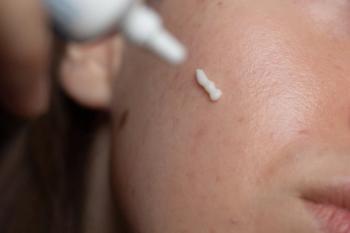
Q&A: Dosing Flexibility Strategies for Oral and Biologic Therapeutics in AD With Raj Chovatiya, MD, PhD, MSCI
Key Takeaways
- Dose flexibility in AD management aligns treatment with patients' lifestyles and fluctuating symptoms, enhancing personalized care.
- Patients with well-controlled AD symptoms benefit most from flexible dosing, potentially reducing therapy frequency.
Raj Chovatiya, MD, PhD, MSCI, discussed his approach to personalizing treatment dosing plans with adult patients based on skin clearance and therapeutic type at RAD 2025.
At the
Chovatiya, clinical associate professor at the Rosalind Franklin University Chicago Medical School, founder and director of the Center for Medical Dermatology and Immunology Research in Chicago, and a Dermatology Times Editorial Advisory Board member, reviewed dosing flexibility in adult atopic dermatitis (AD) management, highlighting how both oral and biologic therapies can be tailored based on disease control, patient lifestyle, and real-world treatment patterns. He shared insights from clinical practice and trial data to demonstrate how personalized dosing strategies may optimize long-term outcomes for adult patients with AD.
Q: What does dose flexibility mean in the context of atopic dermatitis, and why is it becoming more important in dermatology?
A: One of the things that we've learned is that in the real world, patients oftentimes want their medications to fit around their life, especially based on their symptoms. We know that with a disease like atopic dermatitis, it can be waxing and waning with flares, periods of quiescence, maybe even periods of remission. So, the dream has always been a medication or a medication plan that can fit around where somebody is at. With the way our clinical trials are typically designed, they're usually based on continuous treatment of a topical, continuous taking of an oral medication, or continuous injections of a biologic therapy. Both a combination of real-world data and even some of the unique designs on clinical trials have given us some insights in terms of how we might be able to change dosing from its traditional regimen.
Q: In your experience, which patient profiles benefit most from flexible dosing strategies?
A: The patients that tend to respond the best to therapies, ones that have control of their signs and symptoms, are definitely the ones that are most amenable to some degree of dose flexibility. Some of our biologics allow us to go down to every 4 weeks of dosing, or even every 8 weeks of dosing, if our patients are doing pretty well. I feel like if your patient is getting to very high levels of improvement within several months of treatment, you can definitely think about that as an option.
Q: How do you consider dosing strategies with oral therapeutics for AD?
In the case of oral medications, this isn't something that's been excessively studied in a clinical trial format. This is more in the real world than anecdotal evidence, but for people who have more seasonal disease, maybe during certain parts of the year, or people who are doing pretty well, they might be able to, potentially, in a slightly off-label format, use their medication to fit their disease. So, for somebody who may not have bad symptoms of atopic dermatitis year-round, they might really use their systemic therapy during that part of the year. For somebody who otherwise has achieved high end points in terms of itch and skin clearance, they might end up using the medication a little less frequently.
I've seen this in my practice; patients oftentimes do this and then tell you about it later. I definitely have had patients who have moved down to not taking their medication every single day and still maintaining some degree of clearance. Now, there isn't hard data that I can point to to say who exactly that patient is and how often this is going to work. But I do know that that is one of the benefits of oral therapy for people out there.
Q: How do you consider dosing strategies with biologics for AD?
A: In the case of the biologics, again, I try to avoid too much starting and stopping here, because that can be associated with really losing an effect and maybe not getting the same efficacy you had before. Try to get individuals on biologic therapy who need to be on year-round therapy. It's a good choice for them, and then once they're doing pretty well, we have data from an approved label fashion in the case of traolkinumab, lebrikizumab, and nemolizumab, where people can move down to every 4 weeks or every 8 weeks of dosing. For dupilumab, on-dosing is every 2 weeks. But we actually do have clinical trial data to suggest that people who could go down to every 4 to 8 weeks and still maintain their responses.2
References
- Patel T, Chovatiya R, Drew GS. Dose flexibility in adult AD. Presented at: 2025 Revolutionizing Atopic Dermatitis Conference; June 6-7, 2025; Nashville, TN
- Worm M, Simpson EL, Thaçi D, et al. Efficacy and safety of multiple dupilumab dose regimens after initial successful treatment in patients with atopic dermatitis: a randomized clinical trial. JAMA Dermatol. 2020 Feb 1;156(2):131-143. doi: 10.1001/jamadermatol.2019.3617
Newsletter
Like what you’re reading? Subscribe to Dermatology Times for weekly updates on therapies, innovations, and real-world practice tips.


















